Laos culture
Lao people are frank, open and friendly, and they possess a strongly developed sense of courtesy and respect. Everyone who adheres to the latter will receive a warm welcome.
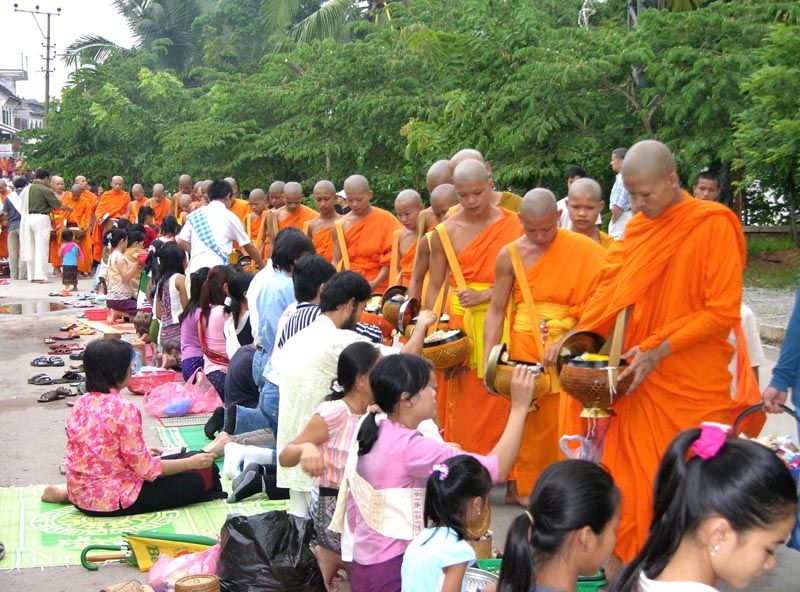
The generally accepted form of greeting among Lao people is the Nop. It is performed by placing one’s palms together in a position of praying at chest level, but not touching the body. The higher the hands, the greater the sign of respect. Nonetheless, the hands should not be held above the level of the nose. The nop is accompanied by a slight bow to show respect to persons of higher status and age. It is also used as an expression of thanks, regret or saying good-bye. But with western people it is acceptable to shake hands.
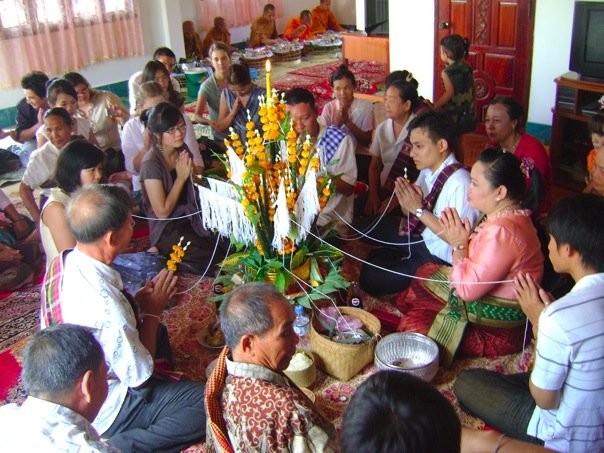
The feet form the inferior part of the body (as much spiritually as physically). You must never indicate or touch another person or object with your foot.
Daily life and social customs
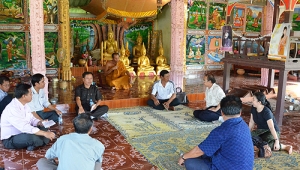
Most families in Laos are involved in farming. Members of households work the land together, with a division of labour by gender. In wet rice cultivation, men plow and prepare the seedbed, control water flow to the fields, and thresh the crop. Women transplant the seedlings, weed the fields, and carry the sheaves of rice to the threshing place. In upland rice cultivation, men cut and clear the swiddens, while women do the sowing and weeding. Wet rice cultivation begins with the onset of the rains in April or May and ends with the harvest in October and November. In upland areas, fields are burned and cleared at the end of the dry season in February and March, and harvesting takes place in November. Cultivation of secondary crops is interspersed with rice cultivation; gardening on river banks, for example, follows the drop in water level at the end of the dry season.
In addition to strictly agricultural activities, the daily lives of rural people involve a number of other tasks, such as fetching water from wells, hunting for game, and gathering various forest products. Common forest products include small game, birds and … (200 of 10,312 words)
Laos Social Rules
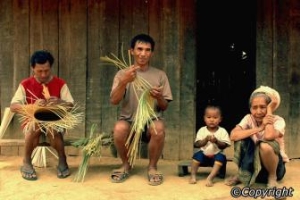
The Lao people greet each other with a prayer-like gesture called a nop. A younger person or a person of lower status will nop their elder or social superior. The western custom of shaking hands has become more common in recent years – though a smile and a slight bow of the head is still considered polite. Backslapping, public displays of affection, shouting, and wild gesticulation are all considered impolite.
The head is considered the highest part of the body, while the feet are considered the lowest, both literally and figuratively. Touching someone’s head or pointing at people or things with the feet are, therefore, considered extremely rude. As with entering temples, shoes are removed before entering somebody’s home.
Greetings
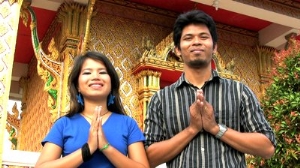
For Men greeting Men – The standard Lao greeting is, “Sabaideebor” which means”how are you?” or “are you well?” This is usually done with both hands pressed together in a prayer in front of your body and accompanied with a slight bow or nod. The response for “sabaideebor” is usually “sabaidee”. Some men will also use a standard handshake. These tend to be on light side. Always smile during greetings.
For Women greeting Women – The standard Lao greeting is, “Sabaideebor” which means “how are you?” or “are you well?” This is usually done with both hands pressed together in a prayer position just below the chin and accompanied with a slight bow. The response for “sabaideebor” is usually “sabaidee”. Always smile during greetings.
Greetings between Men and Women – The standard Lao greeting is, “Sabaideebor”which means “how are you?” or “are you well?” This is usually done with both hands pressed together in a prayer position just below the chin and accompanied with a slightbow. The response for “sabaideebor” is usually “sabaidee”. Always smile during greetings.
Notes: The person who is socially inferior or younger should be the first to bow, but it is considered polite for the older/socially superior person to respond quickly. The higher the hands are held and the lower the bow, the greater the degree of respect. When addressing a social equal, the hands are usually held at the level of the mouth; when addressing a person of higher social standing (this includes monks, regardless of age), the hands are usually held in front of the nose; and when addressing a younger/socially inferior person, they are usually held at the chin.
Wedding and Marriage
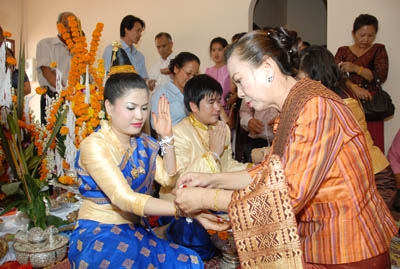
In Laos culture, before a Lao wedding takes place, (after the proposal) a traditional procession call Sou Khor is arranged (an envoy of the boy sent to the girl to ask if her parents will allow the marriage). If her parents agree to let their daughter to marry the boy, a Kha Dong (bride-price) is negotiated as well as who pays for what at the wedding. This is usually the groom, but today often both parties share the expenses. The Sou Khor session takes place several days or even months before the wedding.
Once married, the couple lives with the parents of the bride until after the marriage of the next daughter (if any) or in some cases they move out earlier but the earliest is seven days after their wedding.
When the couple has children, the stay-at-home parents or grandparents usually help raise their grandchildren before they reach school age. Grown-up children usually also live in until they get married and sometimes even until after they have their own children so that the grandparents can help raise them or sometimes until they save enough money to build their own house. However, one of the children (usually the youngest daughter in big families) lives with the parents, inherits the main house, and takes the responsibility of taking care of aging parents. The moved-out children support their parents by sending money back if they live far away, otherwise they come to visit and eat together as a family very often.
In Laos there is no social security or other welfare, such as homes for the elderly provided by the government. However, as our family bonds are strong and everyone in the family helps everyone out it is an important part of our culture to take care of our aging parents and grandparents. This might change in the future because the Lao simple life is slowly being replaced by modern lifestyles and the extended families are gradually being replaced by nuclear ones as people have fewer children these days.
Laotian Literature
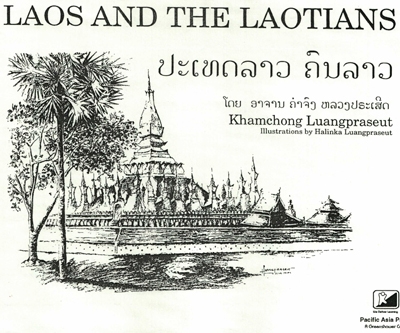
Unfortunately very little is known concerning the history of Lao’s literature because early society was generally decentralized and isolated, and the quality of parchment did not lend itself to preservation, which in turn led to the written word becoming illegible in a relatively short time. The political insatability, especially in areas such as Sieng Khuoang (the Plain of Jars) was as well a barrier to a more enduring literary heritage.
Laotian language was created in the fourteenth century and is read from left to right. The Laotian language contains fifteen vowels and thirty constants. The first record of Laos’s traditional literature is from the 15th and 16th century and it differs prominently from western literature because Laos does not write fiction literature. Of all the literature that has been written ninety percent has a Buddhist religious theme, or else historical as traditional literature was not meant for entertainment, but rather, as an education or a teaching tool. Popular literature, in contrast, is maintained by an oral tradition of folk tales.
Spirit Gates
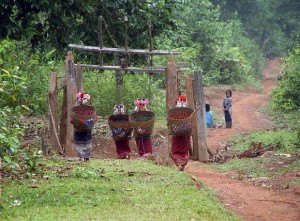
Many hill tribe villages have spirit gates on the paths above and below each village, to protect the residents and deter evil spirits. Some of these may have male and female wooden figures alongside. These gates act as a kind of barrier to the spirits outside the village and provide a way of purifying villagers returning from the forests. In most cases, they are never taken down, but they are rebuilt every year with a ceremony dedicated to the spirits. Usually, only men are involved in this activity. The top of the gates may be adorned with figurines, effigies, animal parts, or carvings depicting weapons such as an AK-47.
The Akha in the Golden Triangle region are the peoples most often associated with spirit gates, however most tribes that live in forested mountains in Asia construct them, including the Hmong. For some hill tribes, if a visitor enters a village through a gate, it is obligatory to enter at least one house.
The Spirit Gate is used to separate the human world from the spirit world, Everything beyond the village gate is considered as part of the domain of the spirits. If one were to venture forth into the forest, they would be at the mercy of the spirits, which may follow that person back to the village to bring sickness or some other misfortune. Upon returning to the village, that person is expected to pass through the village gate in order to exclude any malicious spirits.
Occasionally, there would be a rash of sickness running through the village, and this would be interpteted to mean that the spirits are running havoc on the community, which requires an offering to be made to appease them.
Communication Style

– Verbal communication tends to be non-confrontational and indirect.
– Many Laotians will offer you the response they assume you want to hear, regardless of their feelings or plans. Be prepared to receive seemingly contradictory information from different sources, and try to stay calm in these situations.
– Showing frustration with people in public does not usually win you any points. It may be more helpful to ask various simple yes/no questions of different people in order to put together a picture of the situation than to ask complicated how/why questions that may make someone uncomfortable.
– When there is a conflict, it is often resolved through an intermediary. Don’t expect to discuss the issue directly with the person who has taken offense. Once the problem has been resolved, the two parties can meet congenially without addressing the conflict.
– “Yes” does not always mean “yes” and “no” may be substituted for “maybe”, “possibly” or even “yes”. It’s best to pay attention to non-verbal cues such as facial expressions and body language.
– Laotians tend to have various types of smiles. Some indicate pleasure while others embarrassment or even anger.
Etiquette and Behavior
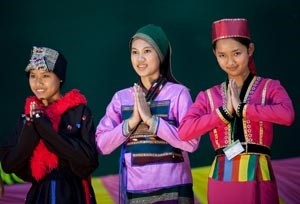
Laotians are generally gentle and polite, and visitors should take their lead from them—avoiding any public display of anger or impolite behavior. Even showing affection in public is frowned-on.
Laotians traditionally greet others by pressing their palms together in a sort of prayer gesture known as a nop; it is also acceptable for men to shake hands. If you attempt a nop, remember that it’s basically reserved for social greetings; don’t greet a hotel or restaurant employee this way. The general greeting is sabai di (“good health”), invariably said with a smile.
Avoid touching or embracing a Laotian, and keep in mind that the head has spiritual significance; even patting a child affectionately on the head could be misinterpreted. Feet are considered “unclean,” so when you sit, make sure your feet are not pointing directly at anyone, and never use your foot to point in any situation. Shoes must be removed before you enter a temple or private home, as well as some restaurants and offices.
Shorts and sleeveless tops should not be worn in temple compounds. When visiting a temple, be careful not to touch anything of spiritual significance, such as altars, Buddha images, or spirit houses. Ask permission from anyone before taking a photograph of him or her.












